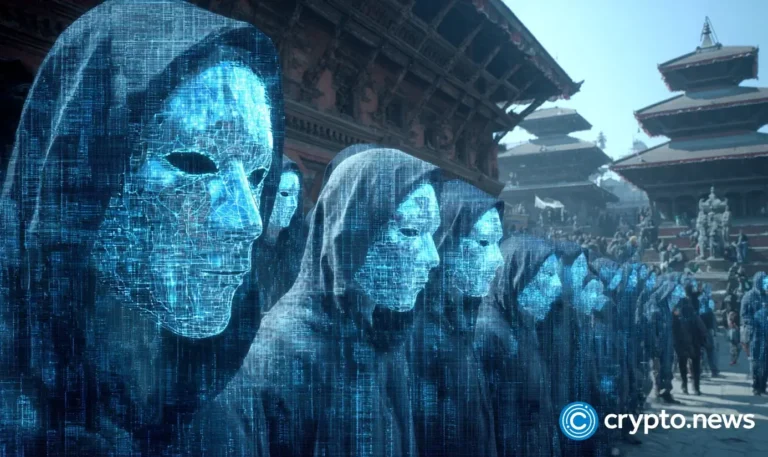Disclosure: The views and opinions expressed here belong solely to the author and do not represent the views and opinions of crypto.news’ editorial.
In a bid to curb growing dissent amongst its youth last month, the Nepalese government abruptly banned 26 social-media platforms; however, what followed was chaos. Protest crowds clashed with police, with parliament and court buildings being torched, eventually resulting in Nepal’s Prime Minister K.P. Oli resigning and fleeing the country. The unrest highlighted how decentralization — both in information flow and digital organizing — can empower citizens in ways governments struggle to control.
Summary
- Nepal’s digital revolt: After the government banned 26 social-media platforms, young Nepalis turned to decentralized apps like Bitchat, proving that shutting down the internet no longer means silencing people.
- Tech stress test: The crisis revealed how decentralized systems — like mesh networks and blockchains — can bypass government censorship and continue operating even when centralized infrastructure is cut off.
- Global signal: From Nepal to Hong Kong and India, the battle for digital freedom is intensifying, showing that decentralized tech isn’t just about finance — it’s about free speech, autonomy, and control over one’s digital life.
However, beneath this layer of dissent and political turmoil, the crisis doubled up as a real-world stress test for decentralized technologies. This is because, as soon as the government decided to “switch off” the nation’s access to the World Wide Web, people (especially the youth) from across the region found tangible workarounds almost immediately.
To elaborate, within days, nearly 50,000 Nepalis had downloaded Bitchat, a P2P messaging app built by Twitter/Square co-founder Jack Dorsey, with almost 39% of the app’s total downloads coming from the nation. Also unsurprisingly, a similar situation unfolded in Indonesia just weeks earlier, when protesters similarly flocked to Bitchat during corruption protests.
In Nepal’s case, the government lifted (or more accurately, was forced to lift) its ban after only a few days because the exercise proved self-defeating as shutting off decentralized mesh networks proved practically impossible for them.
Breaking free of the ‘Single Point of Failure’ conundrum
For many, Nepal’s revolution clearly illustrated that decentralized systems, by design, did not depend on a single central server where users’ sensitive details could be stored without their approval. So when local authorities banned mainstream apps like WhatsApp, Instagram, and Facebook, their decentralized counterparts simply kept running. Even when devices were turned off, the meshes rerouted data through the remaining online peers.
In this broader context, public blockchains work in much the same way, with every transaction and message being recorded on a global ledger that anyone can join. For instance, Bitcoin’s (BTC) ledger is secured by miners on every continent, and Ethereum’s (ETH) smart contracts run on a network of independent validators. If one node goes dark, others fill in, making any ban or shutdown incredibly hard to enforce.
The same concept extends into the financial arena as well, particularly in DeFi, where user funds are locked in code-controlled contracts rather than bank accounts. If authorities attempt to freeze a wallet linked to a particular centralized exchange, the individual can simply transfer their funds and continue facilitating transactions in a peer-to-peer manner.
The wider battle for digital freedom
Nepal’s digital uprising is part of a larger global story about information control. In fact, internet freedom worldwide has been shrinking rapidly, with a recent study revealing that global censorship conditions have declined for the 14th straight year. To date, the European Union has recently announced its intention to implement its infamous “Chat Control” mandate, which would require messaging apps to break encryption for regulatory purposes.
Similarly, during the protests in Hong Kong and Myanmar that took place between 2019 and 2021, activists were forced to use mesh networks and VPNs to circumvent what appeared to be dictatorial shutdowns. Lastly, in India, the government recently issued a new legislation enabling tax officials to access anyone’s WhatsApp data, email, and even encrypted communications during investigations into fraud or evasion.
These illustrations aren’t just exaggerated instances of an Orwellian future but a shape of things to come. In fact, this is precisely why decentralized social networks (such as Mastodon and Nostr) and messaging apps (like Signal, Session, and Status, among others) have and continue to attract users by the day.
Therefore, looking ahead, it seems clear that privacy-conscious users can no longer rely solely on big tech or multinational banks; instead, they need to work in conjunction with permissionless systems, where they can hold their own keys, run a node, or even join a mesh network without needing permission.
As the Nepalese youth has shown, technology initially built for financial freedom can just as easily unlock freedom of speech. When one pathway is blocked, decentralized protocols can simply reroute themselves around the problem.





